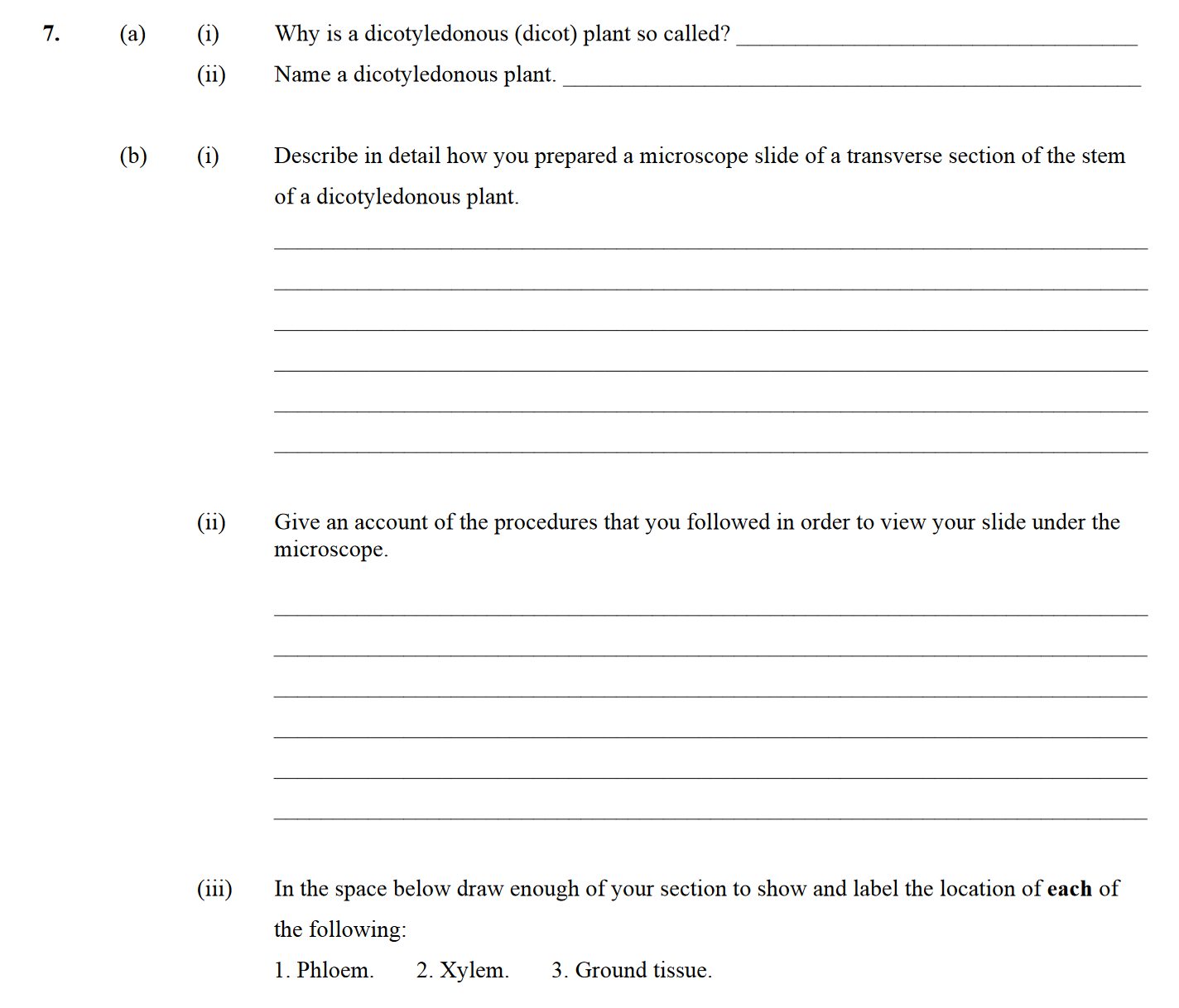Photo AI
7. (a) (i) Why is a dicotyledonous (dicot) plant so called? (ii) Name a dicotyledonous plant - Leaving Cert Biology - Question 7 - 2009
Question 7

7. (a) (i) Why is a dicotyledonous (dicot) plant so called? (ii) Name a dicotyledonous plant. (b) (i) Describe in detail how you prepared a microscope slide of a... show full transcript
Worked Solution & Example Answer:7. (a) (i) Why is a dicotyledonous (dicot) plant so called? (ii) Name a dicotyledonous plant - Leaving Cert Biology - Question 7 - 2009
Step 1
Why is a dicotyledonous (dicot) plant so called?
Answer
A dicotyledonous (dicot) plant is so called because it typically has two embryonic leaves or cotyledons. These cotyledons are the first leaves that appear in seedling development and are features that distinguish dicots from monocots, which have only one cotyledon.
Step 2
Step 3
Describe in detail how you prepared a microscope slide of a transverse section of the stem of a dicotyledonous plant.
Answer
To prepare a microscope slide of a transverse section of the stem of a dicotyledonous plant, I first used a sharp blade or scalpel to cut a thin slice of the stem. This slice was carefully cut away from myself to ensure safety. I then transferred the cut section onto a microscope slide. A cover slip was placed over the section, with a few drops of water applied to prevent drying and to enhance visibility of the tissues during observation.
Step 4
Give an account of the procedures that you followed in order to view your slide under the microscope.
Answer
To view the slide under the microscope, I placed the prepared slide onto the stage of the microscope. I ensured that the lamp was turned on to provide adequate illumination. Next, I adjusted the light and focused the microscope, beginning with a low power lens to locate the tissue. Once the tissue was in focus, I switched to a higher power lens for a more detailed view.
Step 5
In the space below draw enough of your section to show and label the location of each of the following: 1. Phloem. 2. Xylem. 3. Ground tissue.
Answer
In this section, I would provide a labeled diagram showing the transverse section of the stem.
The diagram would include:
- Phloem located towards the outer part of the vascular bundles.
- Xylem situated towards the inner part of the vascular bundles.
- Ground tissue filling the space between the xylem and phloem as well as surrounding them.
